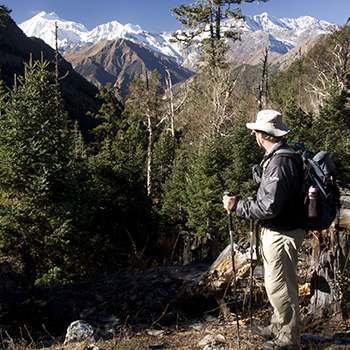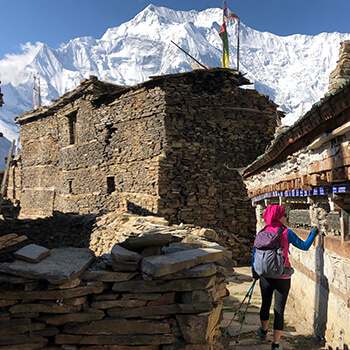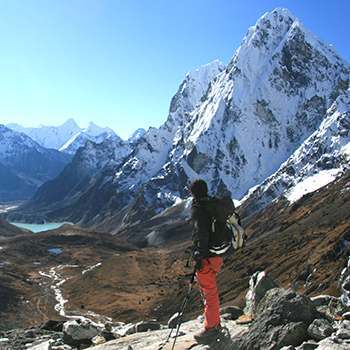Great Himalaya Trail Climate Action Plan
This Great Himalaya Trail Climate Action Plan declares the goals of the Great Himalaya Trail until 2030 – to not contribute to climate change in any way to assist all stakeholders to reduce their CO2e emissions and increase their positive social impacts.
1.0 INTRODUCTION
This plan will outline how the voluntary organisation, the Great Himalaya Trail, will carry out its Climate Action Plan using two declarations and how it could meet some of the sustainable development goals.
1.1 THE GLASGOW DECLARATION
The Glasgow Declaration was launched at COP26, with the objective to raise the climate ambition of tourism stakeholders and ensure strong actions to support the global commitment to halve emissions by 2030 and reach Net Zero as soon as possible before 2050. Tourism needs to act on climate issues to ensure the sustainability, competitiveness, and resilience of the sector. The declaration aims to lead and align climate action across tourism stakeholders, including all public and private sector organisations.
Once you become a signatory to the declaration there are a few things you must do:
- Commit to delivering a climate action plan within 12 months of signing and implementing accordingly.
- If plans are already in place – commit to updating or implementing them in the same period to align with the declaration.
- Commit to report publicly both progress against interim and long-term targets, as well as the actions being taken, at least annually.
- Commit to report publicly at least annually, both for progress against interim and long-term targets, as well as the actions being taken.
Within our destination we commit to deliver our climate action plan within 12 months, the Great Himalaya Trail signed up in June 2021 and we commit to report publicly on our progress, we will aim to do this annually every July from 2023.
To ensure climate action is aligned across all tourism, we agree on five shared pathways for our plans to follow:
| MEASURE
Measure and disclose all travel and tourism-related emissions. Ensure our methodologies and tools are aligned to UNFCCC-relevant guidelines on measurement, reporting and verification, and that they are transparent and accessible. |
| DECARBONISE
Set and deliver targets aligned with climate science to accelerate tourism’s decarbonisation. This includes transport, infrastructure, accommodation, activities, food & drink, and waste management. While offsetting may have a subsidiary role, it must be complementary to real reductions. |
| REGENERATE
Restore and protect ecosystems, supporting nature’s ability to draw down carbon, as well as safeguarding biodiversity, food security, and water supply. As much of tourism is based in regions most immediately vulnerable to the impacts of climate change, ensure the sector can support affected and at-risk communities in resilience building, adaptation, and disaster response. Help visitors and host communities experience better balance with nature. |
| COLLABORATE
Share evidence of risks and solutions with all and work together to ensure our plans are as effective and coordinated as possible. Strengthen governance and capacity for action at all levels, including national and sub-national authorities, civil society, large companies and SMEs, vulnerable groups, local communities and visitors. |
| FINANCE
Ensure organisational resources and capacity are sufficient to meet objectives set out in climate plans, including the financing of training, research, and implementation of effective fiscal and policy tools where appropriate to accelerate transition. |
1.2 TOURISM DECLARES CLIMATE EMERGENCY
Tourism Declares launched on January 14th, 2020, with signatories from across the industry. With Climate Emergency Declarations taking place in other sectors, there was a need for a tourism-specific declaration that could bring together organisations and individuals from across the industry under a common goal.
Tourism Declares exists to enable everyone in the tourism sector to implement Climate Action Plans needed to halve sector emissions by 2030.
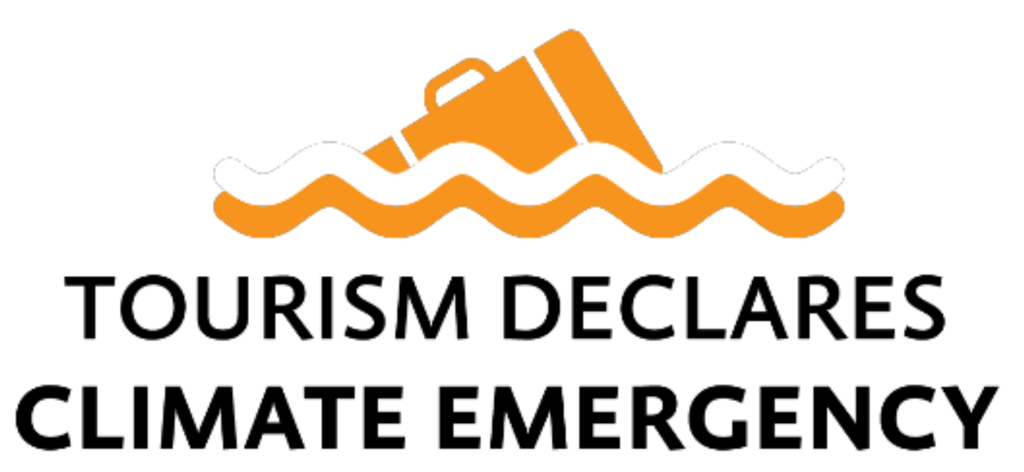
1.3 SUSTAINABLE DEVELOPMENT GOALS
The 2030 Agenda for Sustainable Development was adopted by all United Nations (UN) Member States in 2015, it provides a blueprint for peace and prosperity for our people and planet. There are 17 Sustainable Development Goals (SDG’s).
Within the Great Himalaya Trail Climate Action Plan we have decided to work on several SDG’s – for more information see www.greathimalayatrail.com/myghti/
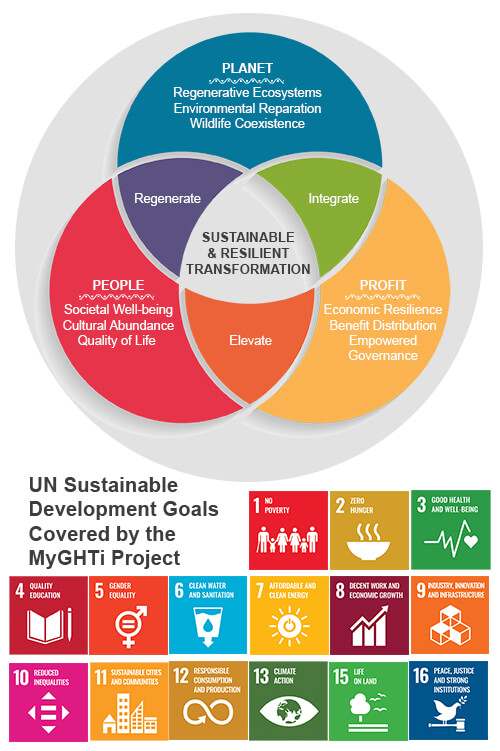
2.0 GHT OVERVIEW
The Great Himalaya Trail crosses the entire length of the Great Himalaya Range, from Arunachal Pradesh in North East India to the Pakistan-India border. To walk the entire route totals approximately 4500km and the total route network documents more than 15,000km of trails.

The Great Himalaya Trail produces a website, guide book and picture book, and maps of known routes to achieve the following goals:
- Inspire trekkers and adventurers from around the world to discover the Himalaya in a responsible manner.
- To promote and support fair and equitable inclusion of all communities along the GHT through the MyGHTi project
- To develop and distribute carbon calculation tools that are relevant for the tourism sector throughout the Himalayan region.
2.1 STAKEHOLDER ENGAGEMENT
As an entirely voluntary organisation Great Himalaya Trail has limited engagement with a range of stakeholders:
- Trekkers and Visitors to the Himalayan region
- Trekking companies and outfitters who send clients to the Himalayan region.
- Authorities and civil society organisations
In all cases the Great Himalaya Trail produces resources that support understanding of sustainable tourism practices and provides tools that allow participants in the Great Himalaya Trail to account for the climate and social impacts.
2.2 GREAT HIMALAYA TRAIL GREENHOUSE GAS INVENTORY
Assessment of Great Himalaya Trail operations have identified the following contributions to climate change generated by operations:
- Production of books and maps – published printed in Nepal from locally sourced resources and for every 1 tonne of paper used, a tree is planted that can absorb 2.5 tonnes of carbon, the net effect is no footprint for our printed publications.
- Hosting website and provision of digital archive resources – provided by Hostinger Green Hosting service with zero footprint.
- Email and messaging services – provided by gmail and wetransfer, total footprint for spam (including removal from mailing lists), 20 emails per month (half with attachments) and 10 file transfers per month represent a carbon footprint of 7,032kgCO2e per annum.
- Production of 50 cloth badges per year made by hand by a local tailor in Kathmandu, represents a zero-carbon footprint.
The Great Himalaya Trail has no staff, no office, no transportation, no travel. All information is gathered from researchers who were already planning to visit a region or undertake an activity for another purpose, for example, leading a group of trekkers or for post-doctoral research.
3.0 CLIMATE ACTIONS AND TARGETS
The Great Himalaya Trail aims to be a zero-carbon emitter by 2030. At present in 2023, our emissions total about 7,000kgCO2e and we are seeking ways to reduce these emissions through the provision of green email and file transfer services. These remain our only carbon emissions.
We will continue to review our Greenhouse Gas Inventory and assessment methodologies on an ongoing basis to ensure the greatest possible accuracy and representation of our operations.
For further information about the Great Himalaya Trail Climate Action Plan please contact robin@greathimalayatrail.com





